| Shiloh, a Virtual Tour Photos from the 1960's Page3 Vintage Shiloh Page1 2 3 4 5 6 Next |
| Shiloh, a Virtual Tour Photos from the 1960's Page3 Vintage Shiloh Page1 2 3 4 5 6 Next |
|
Select Images to Enlarge-Back Button to Return |
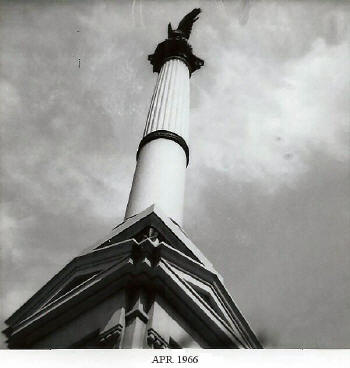 |
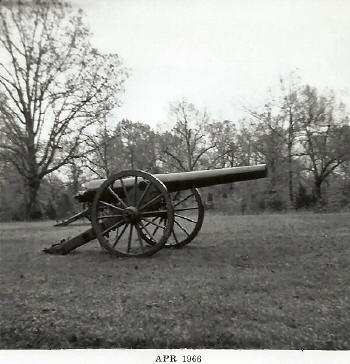 |
|
|
(1966-13) Enlarge The Iowa Monument towers 75-feet into an April day in 1966, the tallest monument at Shiloh. Erected in 1906, the monument was toppled by the Great Cyclone of 1909 that caused heavy damage to monuments, trees, stones in the national cemetery and government buildings in the park. The Iowa Monument was repaired and restored to it's original position in 1910. |
(1966-14) Enlarge 30 pdr Parrott rifles at Grant's Last Line. These guns are probably the ones removed from Tour Stop 18, when erosion threatened to topple the stop into the Tennessee River. |
|
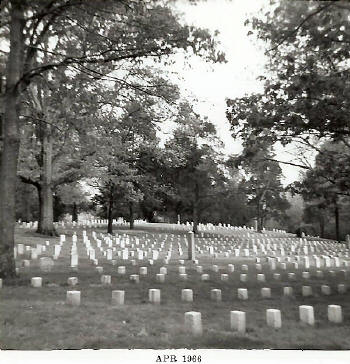 |
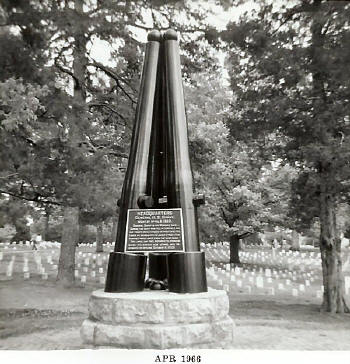 |
|
|
(1966-15) Enlarge Following the battle, the dead of both sides were buried immediately (due to the unusually warm weather) where they fell or in mass trenches. In 1866, the Pittsburg Landing National Cemetery was established (the name changed later to Shiloh National Cemetery) to properly inter the Union dead of Shiloh and other locations along the Tennessee River. In the Fall of 1866, bodies were removed from 156 locations on the battlefield and 566 different locations along the Tennessee River and reburied in the new national cemetery. When the job was completed, the new cemetery contained 3854 Union dead, 2359 of which are known only to God. |
(1966-16) Enlarge On the night of April 6, Grant made his headquarters under a tree in what is now the National Cemetery. It began to rain, and Grant decided to move to a log house nearby. When he arrived, he discovered it was being used as a hospital and operating theater. The sight of so many casualties wounded in every possible condition and with amputations being performed non-stop was more that Grant could take. In his own words, he said: "The sight was more unendurable than encountering the enemy's fire, and I returned to my tree in the rain". The tree was destroyed in the Great Cyclone of 1909, and was replaced with this monument of three 30 pdr Parrott rifle barrels. |
|
|
|
|
|
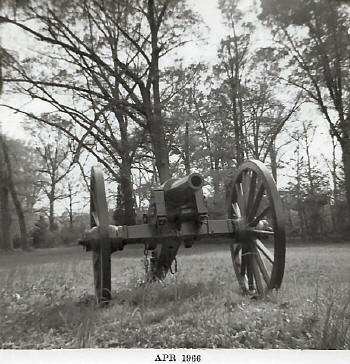 |
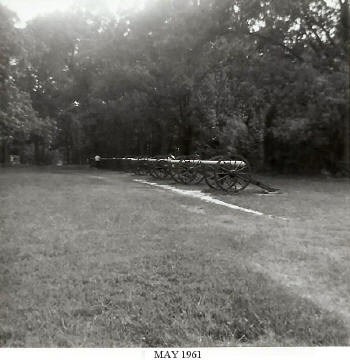 |
|
|
(1966-17) Enlarge Located east of Barne's Field is this Wiard 10pdr, marking the position of Robertson's Alabama Battery. This battery was organized in Pensacola, Florida, and Shiloh was it's first battle. The battery went on to fight in most of the major battles in the Western Theater. |
(1961-18) Enlarge After repeated failed attempts to take the Hornet's Nest, General Daniel Ruggles gathered artillery from all over the field to form a line of 62 cannon and proceeded to blast the Hornet's Nest to pieces. Artillery succeeded where infantry failed and the Union position in the Sunken Road and Hornet's Nest collapsed in the late afternoon of April 6. This photo was taken in 1961. |
Vintage Shiloh Page1 2 3 4 5 6 Next
Return to Shiloh, a Virtual Tour